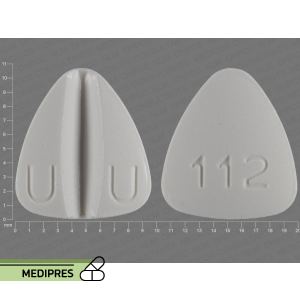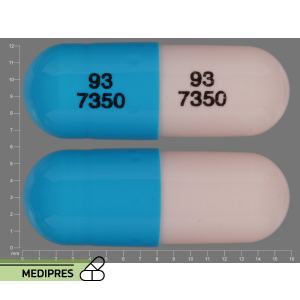
Lamivudine
23 June, 2023
Lansoprazole Orally Disintegrating Tablets
23 June, 2023Lamotrigine ODT
Generic name:
Lamotrigine
Drug class:
Phenyltriazine anticonvulsant; mood stabilizer
Dosage form:
Orally disintegrating tablet (ODT): 25 mg, 50 mg, 100 mg, 200 mg
Route of administration:
Oral
Dose:
- Epilepsy (monotherapy): 100–500 mg/day in divided doses; initiate 25 mg once daily, titrate over 5–8 weeks.
- Epilepsy (adjunctive): 25–350 mg/day divided twice daily; titrate per regimen.
- Bipolar I disorder maintenance: 100–400 mg/day (commonly 200 mg/day).
- With valproate: max 200 mg/day; initiate 25 mg every other day.
- With hepatic enzyme inducers (e.g., carbamazepine): may require 300–500 mg/day.
- Dose adjustments in hepatic or renal impairment: Varies by indication; consult label.
Mechanism of action:
Inhibits voltage-sensitive sodium channels, stabilizing neuronal membranes and modulating presynaptic release of excitatory neurotransmitters such as glutamate and aspartate.
Drug usage cases:
- Partial seizures and primary generalized tonic-clonic seizures (≥2 years)
- Lennox–Gastaut syndrome (adjunctive; ≥2 years)
- Bipolar I disorder: maintenance therapy
- Off-label: prophylaxis of depressive episodes in bipolar II disorder
- Off-label: neuropathic pain (e.g., trigeminal neuralgia, diabetic neuropathy)
- Off-label: mood stabilization in borderline personality disorder
Drug contra indications:
- Hypersensitivity to lamotrigine or any formulation component
- History of lamotrigine-induced serious rash (e.g., Stevens–Johnson syndrome)
Side effects:
- Severe skin rash (Stevens–Johnson syndrome, toxic epidermal necrolysis)
- Drug reaction with eosinophilia and systemic symptoms (DRESS)
- Headache, dizziness, ataxia, somnolence
- Diplopia, blurred vision, nystagmus
- Nausea, vomiting, abdominal pain
- Insomnia, irritability, anxiety
- Weight gain or loss
- Leukopenia, anemia, thrombocytopenia (rare)
- Hepatic failure (rare)
- Suicidal ideation and behavior
Warnings:
- Risk of serious rash; adhere to slow titration schedule
- Higher rash risk with valproate coadministration, rapid escalation, pediatric patients
- Monitor for hypersensitivity signs: fever, lymphadenopathy, organ involvement
- Increased risk of suicidal thoughts; monitor mood and behavior
- Potential blood dyscrasias; consider CBC monitoring if clinically indicated
- Avoid abrupt discontinuation to reduce seizure risk
- May impair cognitive/motor performance; caution when driving or operating machinery
- Adjust dosing in hepatic or renal impairment; monitor levels as needed
Use during pregnancy or breastfeeding:
Pregnancy: Crosses placenta; limited data suggest a low but increased risk of oral clefts and other malformations. Categorized as Pregnancy Category C. Use only if benefits justify potential risk. Monitor serum levels, as clearance increases during pregnancy.
Breastfeeding: Excreted in breast milk; infant serum levels may reach 30–50% of maternal levels. Monitor infant for sedation, feeding difficulties, rash. Breastfeeding may be continued with careful monitoring.



